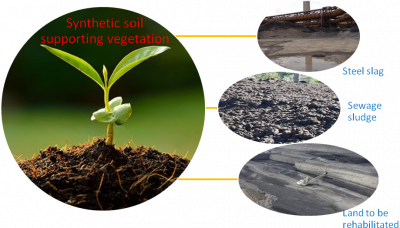
Are you fed up of seeing waste being dumped on lands and causing all sorts of pollution? We too! However, for our researchers, this is not just ‘waste’ but ‘wealth of resource’. Yes, you read it right. Our researchers in collaboration with industry have taken up the challenge to covert wastes into soil. Soon you may start seeing these wastes turning waste barren lands into green lands – which are safe and sustainable.
Our research team in collaboration with Monash University, Australia supported by industry partner JSW are few steps away in synthesising a sustainable soil – built completely from symbiosis of industrial waste and organic wastes which can support vegetation. Recent studies like X-Ray Fluorescence (XRF) and preliminary extraction process revealed the potential of steel slag to supply required micro-nutrients like copper, iron, manganese, lead, silicon, etc. for plants. However, it is deficient in supplying some of the essential macro nutrients like carbon, nitrogen and sulphur. To overcome this challenge, composts made from sewage sludge and municipal solid waste are being utilised – which also have very less market value.
The research outcome ‘synthetic soil’ shall help industries and government in many ways. Synthetic soil can be used as top soil in-place of natural topsoil to replenish / revegetate degraded lands, landfills, abandoned mine sites, embankments, metal contaminated sites, gardens, etc.
Prof. A K Dikshit
